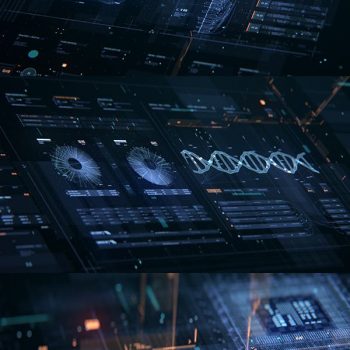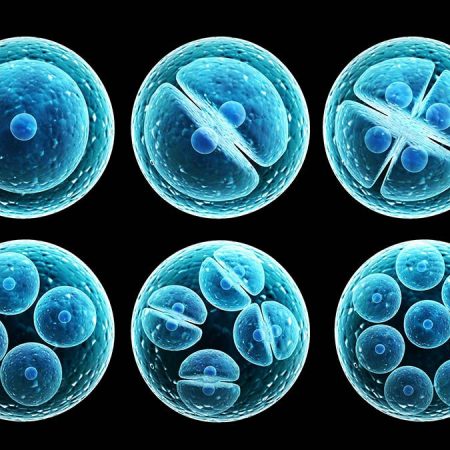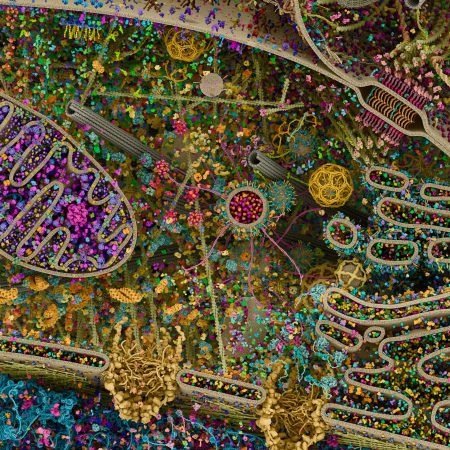Proposal of regenerative medicine in Ecuador
Within the last decades, technology has been advancing based on facilitating the life of the human being, but within medicine there has been a need to look for technologies for the different conditions that can lead to the different diseases or accidents that can happen to the human being. With all this, different technologies have been generated to be able to generate or regenerate tissues, be they tissue, bone, nervous or even generate new organs.
But within the country we have had quite important advances, which are still developing and booming, but it would be interesting to see or implement the new technologies that have been generated around the world and take advantage of them together with the research already present in the country.
For all this, we must take into account the power of cells and how, using stem cells, they can act in regenerative processes or even against cancer, which is one of the conditions that is most present today. Tissue engineering, also known as regenerative medicine or cell therapy, is the branch of bioengineering that uses the combination of cells, materials science and engineering methods, biochemistry, and physicochemistry to improve or replace biological functions.[1]

Current research in Ecuador
Within the country there are several interesting investigations on how different solutions or applications are postulated to make possible the regeneration of living tissue, for this we will start from one of the most important investigations in Ecuador. And this is where we find ourselves with the investigation of the use of the mitochondria of stem cells to be able to transplant them into affected cells and thus be able to contribute to a faster tissue regeneration, but in order to understand this technology, it is necessary to understand what function the mitochondria fulfills. inside the cell as[2]“Mitochondria are cell organelles that are considered the central part of energy metabolism in humans. These organelles house the enzymes and give structural support to the following processes: in the inner membrane, oxidative phosphorylation, in the mitochondrial matrix, the Krebs cycle, the oxidation of fatty acids, and the biosynthesis of the iron-iron catalytic center. sulfur from various enzymes, as well as the synthesis of the heme group and part of the metabolism of amino acids 1-4”.
When looking at the potential that artificially transplanting this organelle to damaged cells may have, to repair them or speed up the healing process, or to skin cells, which would be a great step to reduce aging, this being one of the greatest interest today. As is known, skin aging is caused by genetic processes, but also by external factors which generate constant change, but the change in the skin is more evident in the skin over the years. years of a person, when the age of 50 is reached it is more evident that the skin begins to atrophy because it has a less dense intercellular matrix caused by a decrease in the number of fibroblasts and collagen fibers. As time goes, collagen fibers become thinner and after 50 years the thinner fibers begin to fragment and undergo progressive lysis. This also occurs with elastin fibers, but at a different rate.[3]
In general, this damage to the skin is generated by UVR damage, which generates a decrease in collagen in the skin, and in turn a significant wear of it, therefore, within the study different techniques are presented for the transplantation of the mitochondria.
- AMT/T Technique
The basic studies of this method were carried out in vitro, but with very promising results, showing that if stem/stromal cells are used, these are the only ones capable of transferring mitochondria to any type of cell and therefore to damaged cells. cancer cells and lung cells, as these have shown positive effects on cell repair, generally improving the energy generated by the cell.[3]
As such, it was possible to demonstrate the process of exchanging mitochondria to repair damaged tissue when seeing that in a mouse after having had a stroke, the affected neurons released mitochondria, instead the astrocytes took these mitochondria and recycled them, Instead, they were given healthy mitochondria to improve their recoveries, and this was what inspired them to seek new therapies using mitochondria.
Mitochondria transfer/transplantation (AMT/T) is gaining more evidence of its regenerative effects from in vitro to in vivo treating ischemic diseases in most cases [3]. Therefore, it might be advantageous to transfer mitochondria to specific cells (AMT/T ex vivo) and reintroduce them back into the organism, giving the mitochondria either an encapsulation or putting it inside a membrane for more efficient introduction.

Development of international research
Reconstruction of damaged bile ducts remains a vexing medical problem. Surgeons have few options when it comes to long-segment bile duct reconstruction. Biological scaffolds of decellularized biliary origin may offer an approach to support bile duct replacement.[4]
Within regenerative medicine research there is a new development that arises from the idea of using third generation biomaterials, the step from replacing and repairing with materials from two previous generations, to regenerating and replacing bones, tissues, skin and bile ducts. and urinary, at the National Autonomous University of Mexico (UNAM), a material with small porous structures called ¨Molecular Scaffolds¨ is being developed.
The molecular scaffolds are produced in a laboratory directed by the researcher María Cristina Piña Barba and are developed from collagen, bovine bone and biopolymer, thanks to this the team can replace or repair (totally or partially) also cartilage, heart valves and bladder. Others have been tested in the trachea, liver and heart.[1]
For molecular scaffolds, they currently use 3D printing and are already conducting tests in collaboration with public hospitals of the National Institutes of Rehabilitation (INR) and of Respiratory Diseases (INER) to test the scaffolds in humans in Mexico.
- Investigations into the secretion of human stem cells induced by a bovine bone matrix.
Bovine bone matrix is a natural material that has been used in the treatment of bone lesions, for this research they were based on the study of Nukbone (NKB) bovine bone matrix due to its osteoconductive and osteoinductive properties.
His study was based on analysis of the secretion of pro-osteoblastic and anti-osteoblastic cytokines from human mesenchymal stem cells (hMSCs). They evaluated a hemocompatibility of the NKB and the characterization of hMSCs.[5]
- Study of collagen-chitosan membranes for guided bone regeneration:
In this work, the chemical crosslinking with N-(3-dimethylaminopropyl)-N’-ethylcarbodiimide hydrochloride (EDC) was studied in type I collagen-chitosan (Col I-CS) membranes for use in guided bone regeneration (GBR). ).[6]
Membranes were prepared in a wide range of Col I-CS ratios, produced as films by the solvent evaporation technique and crosslinked with EDC. The membranes had a rough surface that is suitable for cell adhesion and a compact cross section to prevent some infiltration of unwanted cell tissues, according to scanning electron microscopy. Physicochemical characterization (thermogravimetric analysis, differential scanning calorimetry[7]

Proposal for the introduction of methods and technologies within the country.
Regenerative medicine in the country has made good progress thanks to the scientists behind the investigations, since their efforts have given us different alternatives for treatments in tissues damaged by different conditions, using mitochondria transplantation from stem cells to affected cells, as this is a totally innovative treatment, but if we also look at the different investigations that have been carried out outside the country, these become a very interesting alternative, because if a collaboration were to be reached with the teams of professionals who are in charge of these projects, a very interesting new proposal would be reached.
Based on the previous internationally speaking study, it is a question of incorporating development measures within an advance in the regenerative medicine part where we can subtract animal parts as a basis to elaborate biocompatible materials guiding us in the first generations to obtain third generation biomaterials, as well It is like the research carried out at UNAM, it gives us a frame of reference to be able not only to replace and repair (partially) bone tissue, but also to be able to regenerate and replace (totally and partially) damaged tissues in the biliary part and the main organs. of the human beingUsing components that our tissue has, such as collagen, we can create studies and implant it so that it regenerates, especially taking into account the part of biocompatibility that this material must have in order to have complete regeneration and that the body ends up «self-healing», for through previous studies and a replacement to their damaged tissues.
Where, using these investigations as a basis, new projects could be generated within the country and thus this field of study, such as regenerative medicine, would be of the utmost importance to generate new treatments and thus help people with different.
REFERENCES
[1] “Biomaterials for regenerative medicine are being developed at UNAM”,UNAM Gazette, May 26, 2022. https://www.gaceta.unam.mx/desarrollan-en-la-unam-biomateriales-para-medicina-regenerativa/ (accessed October 9, 2022).
[2] DP Luna-Ortiz, DP Flores-Chávez, and DM Martínez-Rosas, “Mitochondria as a therapeutic target”,no 4, p. 15, 2014.
[3] M. Balcazaret al., “Bases for Treating Skin Aging With Artificial Mitochondrial Transfer/Transplant (AMT/T)”, Front. Bioeng. Biotechnol., vol. 8, p. 919, Aug. 2020, doi: 10.3389/fbioe.2020.00919.
[4] Y. Ramirez-Marinet al., «Perfusion Decellularization of Extrahepatic Bile Duct Allows Tissue-Engineered Scaffold Generation by Preserving Matrix Architecture and Cytocompatibility,» Materials, vol. 14, not 11, p. 3099, 2021.
[5] N. Rodríguez-Fuenteset al., «Cytokines secretion from human mesenchymal stem cells induced by bovine bone matrix», Biomed. Mater. Eng., vol. 32, no 4, p. 217-228, 2021.
[6] JL Hidalgo-Vicelis, MA Alvarez-Perez, SP Miranda-Castro, and MC Piña-Barba, «Type I Collagen-chitosan Membranes Crosslinked Chemically with N-(3-dimethylaminopropyl)-N’-ethylcarbodiimide Hydrochloride for Guided Bone Regeneration: A Comparative Study»,Fibers Polym., vol. 21, no 2, p. 262-272, 2020.
[7] JL Hidalgo-Vicelis, MA Alvarez-Perez, SP Miranda-Castro, and MC Piña-Barba, «Type I Collagen-chitosan Membranes Crosslinked Chemically with N-(3-dimethylaminopropyl)-N’-ethylcarbodiimide Hydrochloride for Guided BoneRegeneration: A Comparative Study’, Fibers Polym., vol. 21, no 2, p. 262-272, 2020.

Paula Andrade
Estudiante de Ingeniería Biomedica en la Universidad Politécnica Salesiana Sede Cuenca, miembro y voluntaria de IEEE desde junio del 2019. Ayudante de el grupo de investigación de ingeniería biomedica GIIB, presidenta WIE 2021 y coordinadora de membresías 2022-2023.
